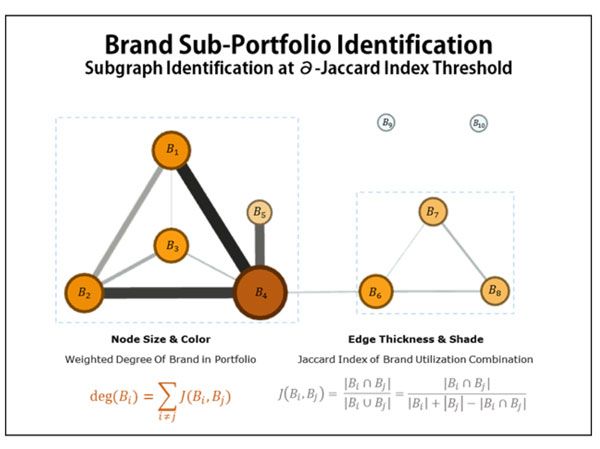How Data Science & Network Analytics Can Help Pharma Shift from Brand Centricity to Customer Centricity
Healthcare companies are overwhelming physicians and hospitals with brand messaging overlap. Let’s use data science to fix that, says Kevin Troyanos.
Healthcare companies are overwhelming physicians and hospitals with brand messaging overlap. Let’s use data science to fix that, says Kevin Troyanos.
Healthcare practitioners are getting sick of pharma sales reps. Over the past decade, many HCPs have significantly reduced the access they grant to pharmaceutical sales representatives: in 2008, roughly 80 percent of physicians were classified as “rep-accessible,”- willing to meet with more than 70 percent of sales reps who request an audience. By 2016, that figure had dropped to 44 percent.
One of the biggest reasons that HCPs are less willing to work with pharma reps today than they were eight years ago is that pharma has not adopted the customer-centric approach that most other industries have already embraced. The onset of the digital revolution brought with it a shift in consumer expectation (after all, HCPs are consumers too) - one that called for most personal brand messaging fueled by the proliferation of consumer data. But pharma companies have been slow to adapt to this new landscape, and HCPs are losing their patience.
Pharma Companies are Organizationally Siloed, and Customers Bear the Consequences
Because branded drugs can cost upwards of a billion dollars to bring to market, pharmaceutical companies often dedicate entire marketing and sales teams to the promotion of a single offering. Consequently, there is immense pressure on these teams to aggressively push their assigned brand - and only that brand - in order to recuperate the often extensive R&D resources consumed by its development.
This contextual blindness results in the emergence of multiple brand silos within a single pharmaceutical company. Two products - let’s call them Brand X and Brand Y - that are both produced by the same company may appeal to many of the same physicians. And yet, it’s not unusual for a rep for Brand X and a rep for Brand Y to visit the same office or hospital on the same day, completely unaware that they are on the “same side,” so to speak. By overwhelming the target HCP with overlapping details, the single pharmaceutical company ends up hamstringing all of its reps and, potentially, competing with itself for share of voice.
Such overlap is equally problematic in the realm of digital marketing, and other traditional non personal promotional efforts such as remote detailing, direct mail, and email marketing. Not only does this make for a subpar client experience, but a brand-centric organization effectively undermines big-picture marketing strategy, limits spend effectiveness, and misses the opportunity to package campaigns together across brands in order to make a more meaningful impact.
Leveraging Data Science to Overcome Organizational Inefficiency
By utilizing association rules algorithms in conjunction with network analytics, pharma brands can quickly identify where pockets of customer overlap exist within an organization. One analytical methodology that we’ve found particularly useful for this business problem is in implementing a graph theoretic representation of Borelt’s Jaccard Item Set Mining Algorithm. By leveraging network analysis, we are able to quickly identify subgraphs of brand combinations as it relates to overlapping prescriber trial, adoption, and/or loyalty (measured by the Jaccard Index):

After identifying which HCPs are being oversaturated by messaging across multiple brands & channels from a portfolio perspective, pharma companies can reconfigure their organizational structure and communication strategy in order to more effectively - and strategically - target those doctors with a personalized portfolio orientation.
This holistic, cross-organizational approach not only not only reduces internal inefficiencies, but improves the overall HCP experience by placing their needs and preferences at the center of the outreach process. Think about it: if one company is sending ten reps and twenty emails into one physician’s office and inbox in any given month, that’s hours of a doctor’s valuable time spent sifting through separate messages (not to mention the risk of opting out of communications altogether) - all of which could be consolidated into a smaller set of strategic, customized pitches based on individual physician needs.
These data-driven insights have the power to facilitate the shift from a siloed, brand-to-HCP sales and marketing scheme to a comprehensive, cross-organizational, customer-centric strategy. Customer centricity is first and foremost about catering to the unique needs and desires of every consumer, but doing so is only possible if a pharmaceutical company takes the time to identify just what a consumer’s preferences and behavior precipitate. Data Science empowers pharmaceutical brands to leverage these profound insights in minimizing inefficiencies and facilitating data-driven, relational HCP interaction.
About the Author
Kevin Troyanos leads the Analytics & Data Science practice team at Saatchi & Saatchi Wellness. He has focused his career within the healthcare marketing analytics space, empowering healthcare marketers with data-driven strategic guidance while developing innovative solutions to healthcare marketing problems through the power of data science. His role at Saatchi & Saatchi Wellness is to guide departmental vision and lead innovation initiatives, effectively positioning marketing analytics as a competitive differentiator and organic growth driver for the agency at large.
The Misinformation Maze: Navigating Public Health in the Digital Age
March 11th 2025Jennifer Butler, chief commercial officer of Pleio, discusses misinformation's threat to public health, where patients are turning for trustworthy health information, the industry's pivot to peer-to-patient strategies to educate patients, and more.
Navigating Distrust: Pharma in the Age of Social Media
February 18th 2025Ian Baer, Founder and CEO of Sooth, discusses how the growing distrust in social media will impact industry marketing strategies and the relationships between pharmaceutical companies and the patients they aim to serve. He also explains dark social, how to combat misinformation, closing the trust gap, and more.